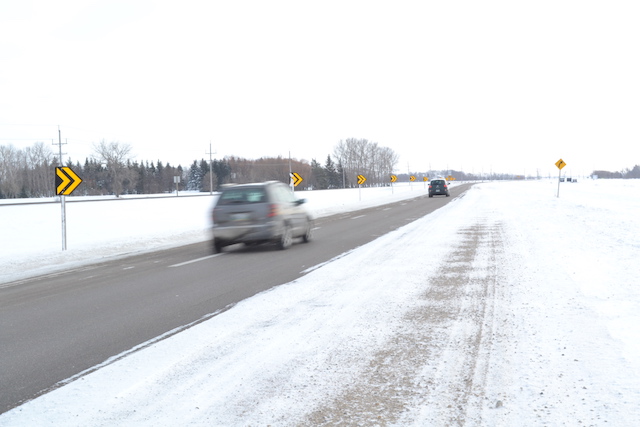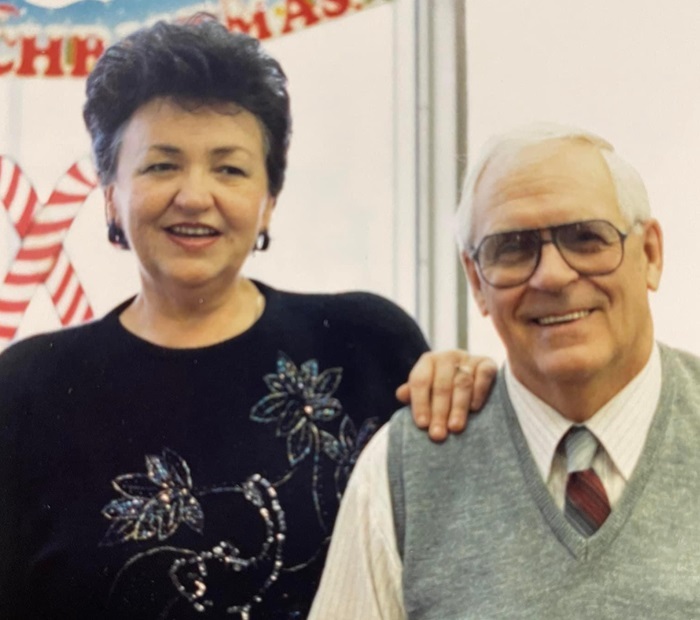
With new traffic lights at the corner of Highways 311 and 59, many are now anxiously awaiting the next phase of a highway project that could make their daily commute to Winnipeg safer still.
In 2006, a portion of this busy transportation artery was twinned from Winnipeg to Île-des-Chênes. A Manitoba government news release dated November 2006 delivered the following comments from the Manitoba Infrastructure and Transportation (MIT) minister on the $41 million project: “The growing traffic volumes between Winnipeg and communities in the southeast region reflect the booming local economy. This expanded corridor will enhance capacity, promote tourism and increase safety at the same time.”
In the 10 years since, while communities south of Île-des-Chênes have continued to see exponential growth, further twinning seems to be all but forgotten.
In the spring of 2015, representatives from 5 municipalities and the towns of Niverville and St- Pierre-Jolys formed a group called the Highway 59 Partners. Their objective is to address the needs of all communities in the southeast in terms of twinning the highway.
“First it’s a functional study to see where the highway would go,” say Mona Fallis, Mayor of St-Pierre-Jolys and spokesperson for Partners, “where it would make sense for all the municipalities involved and where it would cause the least amount of disruption to residents who already live there.”
In fall, the Partners met with MIT to encourage the twinning project, as well as to promote conversation with the province before a plan is acted on. Fallis was hopeful after the initial meeting. “The discussions have started. We’ve never had that before. So, once there’s dialogue, we can progress.”
She anticipates further meetings with MIT throughout 2016.
Larry Halayko, executive director of construction and maintenance for MIT, says that further twinning of PTH 59 is not currently part of their approved multiyear capital program. He adds that the province is planning a functional design study of the stretch of highway from Île-des-Chênes to PTH 52 sometime in 2017. This will provide them with information regarding highway alignment, right-of-way requirements, and cost estimates. The study would take approximately 18 months to complete. He declined to offer a timeline from study completion to project commencement.
Melanie Trepanier of Niverville knows firsthand the dangers of driving this stretch of highway. On August 6, 2015, she received a phone call that every parent fears. Her daughter Brittany and a friend were driving their usual route home from Winnipeg. Stopped on the highway to make an east turn, Trepanier’s daughter noticed, too late, a car from the rear that wasn’t slowing down. Trepanier’s car was rear-ended at highway speed by a distracted driver, her vehicle demolished and the incident just short of fatal.
“There are lots of homes on either side of this highway that [drivers] have to stop and turn at,” says Trepanier. “I fear for myself and my family every single day.”
Trepanier and her husband arrived at the scene of the accident to a hysterical daughter and an unconscious passenger, both trapped until the Jaws of Life arrived to release them. The driver who struck them walked away without injury.
“As a mother I felt completely helpless. All I could do was stroke my daughter’s hair and tell her everything is going to be alright.”
Her daughter’s passenger suffered a fractured skull and has no memory of the accident. Trepanier’s daughter sought the help of a counsellor for PTSD and still experiences headaches and shoulder pain. She now avoids Highway 59, choosing alternate routes to get home.
Stories abound of speeding and impatient drivers on this two-lane stretch of highway, of bad weather conditions that reduce visibility for long tracts where the roadway lies unsheltered. When there is only a single lane headed in either direction, there are no options for slower traffic to yield to the right, granting safe passing options to faster drivers.
Karen Friesen recalls her Highway 59 commutes in winter. “I had to get to work just like everyone else. I left early in bad weather knowing that road conditions wouldn’t be great.” In a compact car with no winter tires or 4-by-4, she chose to reduce her speed.
“Loads of people honked at me,” Friesen says. “I couldn’t pull over to let them pass for fear I’d get stuck in the snow. I will never forget how I felt, with tears in my eyes, because I was being harassed by the [driver] behind me, scared that they would be pulling a ridiculous move to get in front of me.”
Halayko of MIT says that the province regularly monitors traffic loads and safety concerns on all provincial highways. Factors they use to consider a twinning project are an evaluation of traffic volumes, traffic mix, terrain, access management, and estimated cost of construction. These things, he suggests, will impact prioritization.
In the meantime, as is so often the case, others wonder whether it will take a fatality or two to set the gears in motion.



















